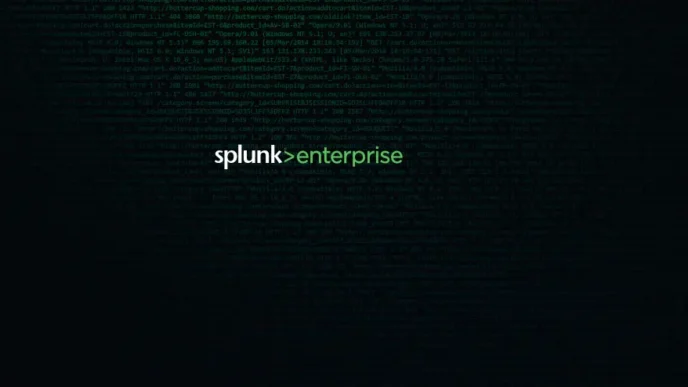Introduction: The Triad of Cybersecurity Roles
In modern cybersecurity operations, the Red Team, Blue Team, and Purple Team form a critical triad in protecting digital infrastructure. While each team has distinct responsibilities — from simulating attacks to defending systems and improving detection — their work is increasingly interconnected.
Understanding these roles is essential for professionals looking to enter or pivot within cybersecurity. This guide breaks down the careers, responsibilities, skills, and global salary outlook for each team, and concludes with a side-by-side comparison.
Red Team: Offensive Security Experts
What They Do
Red teamers simulate real-world attacks on an organization’s systems, networks, or applications to uncover security weaknesses. They think like adversaries to test defenses.
Core Responsibilities
- Conduct ethical hacking and penetration testing
- Develop and execute adversary emulation plans
- Bypass detection systems to evaluate effectiveness
- Report security vulnerabilities with remediation suggestions
- Use social engineering to test human defenses
Education & Training
- Typical degrees: Cybersecurity, Computer Science, Information Systems
- Relevant study areas: Ethical Hacking, Networking, Operating Systems, Reverse Engineering
Key Certifications
| Certification | Issuer | Difficulty | Renewal |
|---|---|---|---|
| Offensive Security Certified Professional (OSCP) | Offensive Security | High | Lifetime |
| Certified Ethical Hacker (CEH) | EC-Council | Medium | Every 3 years |
| GIAC Penetration Tester (GPEN) | GIAC / SANS | Medium | Every 4 years |
Key Skills
- Offensive tools: Metasploit, Cobalt Strike, Nmap, Burp Suite
- Programming/scripting: Python, Bash, PowerShell
- Deep knowledge of vulnerabilities, exploits, and OS internals
- Creativity, persistence, adversarial thinking
Blue Team: Defensive Security Analysts
What They Do
Blue teamers focus on detecting, analyzing, and responding to cyber threats in real-time. They defend the organization’s infrastructure and data from intrusions.
Core Responsibilities
- Monitor security alerts and logs (SOC operations)
- Investigate and contain incidents
- Configure and tune security tools (SIEM, EDR)
- Perform threat hunting and vulnerability management
- Conduct digital forensics and reporting
Education & Training
- Typical degrees: Cybersecurity, Information Assurance, Digital Forensics
- Relevant study areas: Incident Response, SIEM, Network Security, Operating Systems
Key Certifications
| Certification | Issuer | Difficulty | Renewal |
|---|---|---|---|
| GIAC Certified Incident Handler (GCIH) | GIAC / SANS | Medium | Every 4 years |
| CompTIA Cybersecurity Analyst (CySA+) | CompTIA | Beginner | Every 3 years |
| Certified SOC Analyst (CSA) | EC-Council | Beginner | Every 3 years |
Key Skills
- Tools: Splunk, ELK Stack, CrowdStrike, Wireshark
- Strong analytical and forensics capabilities
- Knowledge of log analysis, system hardening, and malware behavior
- Communication and reporting skills for IR
Purple Team: Integrative Security Professionals
What They Do
Purple teamers bridge the gap between red and blue teams. They ensure that attack simulations (red) lead to improved detection and defenses (blue), creating a feedback loop for security improvement.
Core Responsibilities
- Design and execute coordinated exercises between red and blue teams
- Validate and enhance detection capabilities
- Develop MITRE ATT&CK-based threat emulations
- Measure and optimize response times and tool configurations
- Support continuous security validation
Education & Training
- Typical degrees: Cybersecurity, Computer Science
- Preferred knowledge: Exposure to both offensive and defensive domains
Key Certifications
| Certification | Issuer | Difficulty | Renewal |
|---|---|---|---|
| GIAC Purple Teaming (GPTC) | GIAC / SANS | Medium | Every 4 years |
| Certified Red Team Professional (CRTP) | Pentester Academy | Medium | Lifetime |
| MITRE ATT&CK Defender (MAD) | MITRE Engenuity | Medium | Varies |
Key Skills
- Hybrid knowledge: Attack TTPs + Defensive controls
- Familiarity with SIEM, EDR, adversary simulation tools
- Frameworks: MITRE ATT&CK, Cyber Kill Chain
- Collaboration and technical reporting
Global Salary Comparison
| Role | Country | Entry-Level | Mid-Level | Senior-Level |
|---|---|---|---|---|
| Red Team | USA (USD) | $85,000 | $115,000 | $150,000 |
| UK (GBP) | £45,000 | £65,000 | £95,000 | |
| France (EUR) | €42,000 | €60,000 | €85,000 | |
| Switzerland (CHF) | CHF 90,000 | CHF 120,000 | CHF 155,000 | |
| Australia (AUD) | A$90,000 | A$125,000 | A$160,000 | |
| Blue Team | USA (USD) | $75,000 | $100,000 | $130,000 |
| UK (GBP) | £40,000 | £58,000 | £80,000 | |
| France (EUR) | €38,000 | €55,000 | €75,000 | |
| Switzerland (CHF) | CHF 85,000 | CHF 110,000 | CHF 140,000 | |
| Australia (AUD) | A$85,000 | A$115,000 | A$145,000 | |
| Purple Team | USA (USD) | $90,000 | $120,000 | $155,000 |
| UK (GBP) | £50,000 | £70,000 | £100,000 | |
| France (EUR) | €45,000 | €65,000 | €90,000 | |
| Switzerland (CHF) | CHF 95,000 | CHF 125,000 | CHF 160,000 | |
| Australia (AUD) | A$95,000 | A$130,000 | A$165,000 |
Role Comparison: Red vs Blue vs Purple Teams
| Feature | Red Team | Blue Team | Purple Team |
|---|---|---|---|
| Primary Focus | Offensive testing | Defensive monitoring/response | Bridging red and blue for improvement |
| Main Goal | Exploit vulnerabilities | Detect and respond to threats | Optimize detection & response |
| Key Tools | Metasploit, Cobalt Strike | Splunk, CrowdStrike, ELK | Atomic Red Team, CALDERA, SIEM/EDR |
| Knowledge Base | Hacking techniques, exploits | Logs, systems, forensics | MITRE ATT&CK, detection engineering |
| Career Entry Path | Ethical hacking, pen testing | SOC analyst, IR specialist | Mixed red/blue experience |
| Salary Potential | High (offensive edge) | Moderate to high | Highest due to hybrid skill set |
| Best Suited For | Offensive thinkers | Defensive and analytical minds | Cross-functional communicators |
Job Market Trends
According to industry research from (ISC)² and Cybersecurity Ventures:
- Red Teaming roles have grown by over 30% in offensive security hiring, especially in critical sectors like finance and healthcare.
- Blue Team roles continue to dominate, accounting for over 50% of open cybersecurity positions globally.
- Purple Team roles are gaining traction fast, with enterprises adopting continuous threat emulation and MITRE ATT&CK validation, driving demand.
Organizations are increasingly shifting toward security validation, automation, and cross-functional collaboration, placing purple teamers in strategic demand.
Conclusion: Choosing Between Red, Blue, and Purple Team Careers
Red, Blue, and Purple team roles each play a critical part in building, testing, and reinforcing cybersecurity in the face of ever-evolving threats.
- If you’re drawn to breaking systems, thinking like an adversary, and challenging defenses, the Red Team offers a high-impact offensive path.
- If you’re passionate about protecting systems, analyzing threats, and responding to real-time attacks, the Blue Team puts you on the front line of digital defense.
- And if you’re the kind of professional who wants to combine both mindsets, improve collaboration, and turn attack simulations into actionable defenses, the Purple Team is where strategic influence meets technical depth.
Each role demands unique skills but contributes equally to an organization’s cyber resilience. Understanding where your strengths, interests, and mindset align will guide your path in this triad.
The good news? In a world short on skilled cybersecurity professionals, there’s no wrong choice — only the one that fits you best.














